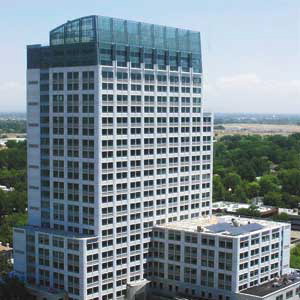An executive order directs state agencies to cut carbon emissions, save water and energy

Governor Jerry Brown decreed yesterday that state-owned buildings across California must go green.
The executive order stipulates that state agencies must reduce their greenhouse gas emissions by 20% using 2010 as a baseline, and half of all new and renovated buildings must be Net Zero Energy by 2020. The order, B-18-12, also continues a previous policy requiring state-owned buildings larger than 10,000 square feet to meet the guidelines of the U.S. Green Building Council’s “Silver” rating.
“This shows that the state is very focused on meeting very ambitious yet achievable goals,” said Evan Westrup, a spokesperson for the governor’s office.
The move is a step toward compliance with AB 32, the California Global Warming Solutions Act, which requires that statewide greenhouse gas emissions brought down to 1990 levels by 2020.
According to a release from the governor’s office, the statewide initiative will also save one billion gallons of water and an estimated $45 million in tax dollars each year. Westrup did not have figures on projected job creation, but he pointed out that similar initiatives geared toward efficiency have created 1.5 million jobs across the state since 1978.
Electricity generation for buildings was the second-largest single source of greenhouse emissions in the state, putting an estimated 113 million tons of carbon into the atmosphere in 2009. The bulk of emissions do not originate at buildings themselves, but at fossil fuel burning power plants that supply electricity to them through the power grid. In California, the only source that generates more greenhouse emissions than buildings are the state’s 31 million registered cars, trucks and buses.
A similar initiative, signed by Governor Arnold Schwarzenegger in 2004, was rescinded with yesterday’s order. That mandate required state-owned buildings to cut energy use in state buildings from 2003 levels by 20% by the year 2015. Westrup said that the latest order does not negate but “dramatically expands” the provisions of the 2004 order, including directives to develop on-site energy generation capacity as well as for agencies to buy more “environmentally friendly” products and install charging stations for electric cars in employee parking facilities.
According to the Department of General Services — the agency that oversees most of the state’s buildings — there are currently about 50 buildings across the state that have gained certification or are in the process of being certified through the Green Building Council’s Leadership in Energy and Environmental Design, or LEED, program.
“All of these efforts are certainly important to the taxpayers as we green the state’s real estate portfolio,” said Eric Lamoureux, deputy director of the Department of General Services. “There are upfront costs, but those costs pay for themselves over the life of the building.”
Several Bay Area communities have already introduced green building mandates. In 1998, Oakland implemented its “Sustainable Community Development Initiative” and, in 2008, San Francisco mayor Gavin Newsom introduced energy efficiency measures into the city’s building code for new and existing structures. The new rules are supposed to be fully implemented by this year and are projected to reduce carbon emissions by 60,000 tons and conserve a hundred million gallons of water annually.
One thought on “Brown Says State’s Buildings Must Go Green”
Comments are closed.


So much to be done and they continue to dawdle.